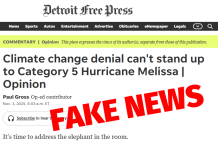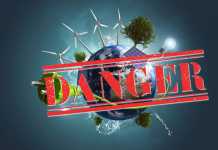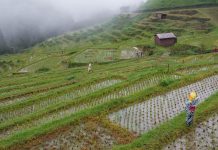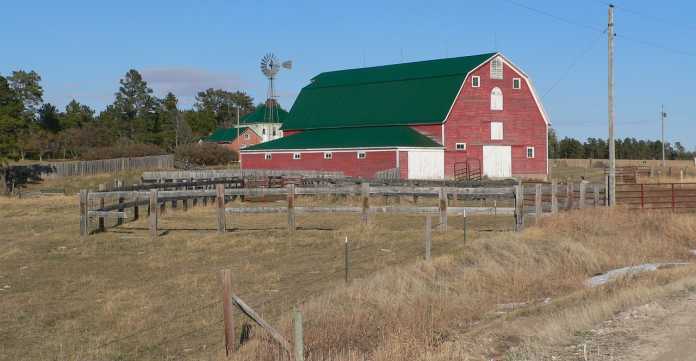Nebraska Today is publicizing an April 14 virtual talk by University of Nebraska-Lincoln (UNL) associate professor Harkamal Walia, titled “Changing Climate, Warmer Nights and Crop Yields.” Objective data show Nebraska crop yields have tremendously increased amidst climate change. This is a point for which Walia and UN-Lincoln seem unaware in their press releases.
The press notice, “Walia to present Nebraska Lecture on climate change, crop yields,” asserts:
“Nineteen of the warmest years have occurred since 2000. The year 2020 tied with 2016 for the warmest year on record. Rising global temperatures combined with erratic precipitation are posing an unprecedented challenge for human health and nutrition through extreme heat and precipitation events.
“One of the major challenges posed by high temperatures is declining crop productivity and quality. Crop yields are particularly sensitive to increasing nighttime temperatures.“
UN-Lincoln’s assertion is refuted by data on droughts and crop production in Nebraska during the past 150 years of modest warming. Crops yields are increasing not declining.
Drought is a major factor which can affect crops. Nebraska’s droughts in recent decades have not been nearly as severe or prolonged as the state has experienced in the past. In any year, it is fairly common for at least some portion of the state of Nebraska to experience abnormally dry conditions. According to the U.S. Drought Monitor, which was implemented in 2000, Nebraska’s longest drought was 348 weeks, beginning on February 5, 2002 and ending on September 30, 2008. During that drought, at least some portions of the state experienced a level of drought, rated from moderate to exceptional. No portion of the state experienced exceptional or extreme drought for more than a short period of time during that six year period.
For comparison, research from UNL shows multiple-year droughts have been relatively common throughout Nebraska’s history, with droughts lasting five or more years occurring 22 times between 1220 AD and 2020. Droughts lasting 10 or more years have occurred 12 times. Every drought lasting 15 years or more occurred between the onset and the end of the Little Ice Age, dating from approximately 1250 AD to 1850 AD. Nebraska’s three longest droughts were 38 years (1276 AD to 1313 AD), 26 years (1539 AD to 1564 AD), and 20 years (1688 AD to 1707 AD).
Crop production in Nebraska has increased substantially in recent years, regularly setting records. Corn and soybeans are Nebraska’s two biggest crops, although beef production is far-and-away Nebraska’s largest agricultural product. Data from the USDA and UN-L’s Institute of Agriculture and Natural Resources show Nebraska set a new record for corn production in 2020, up modestly from the previous record set in 2019. Soybean production increased 4 percent compared to 2019’s production.
UNL data for crop production show that despite the ups and downs farmers experience yearly, there has been a very strong average annual growth rate for soybean and corn production in Nebraska, even exceeding the strong national average. UNL reports that between 1971 and 2017: “Nebraska soybean irrigated and rainfed yields have increased at respective (linear) rates of 0.68 and 0.47 bushels per acre per year. US soybean yields also increased at a rate of 0.47 bushels per acre per year. Nebraska corn irrigated and rainfed yields have increased at respective (linear) rates of 2.17 and 1.76 bushels per acre per year whereas US corn yields increased at a rate of 1.85 bushels per acre per year.”
This data should come as no surprise Walia, because it was produced by the university at which he teaches.
Basic agronomy explains why crops yields have been booming as the planet modestly warms. Numerous articles posted here, here, here, here, and here, for example, explain crops yields are improving and crops are using water more efficiently because of the carbon fertilization effect. In addition, the modest warming has occurred mostly at night during the winter, reducing the number of plant-killing frost events and extending the growing season.
While farmers will continue to face challenges, as they always have, the available evidence shows the present period of warming is enhancing, not hindering, crop production. That’s good news Walia should explain in his presentation, as opposed to the alarmist fearmongering his comments indicate he might be pushing.























